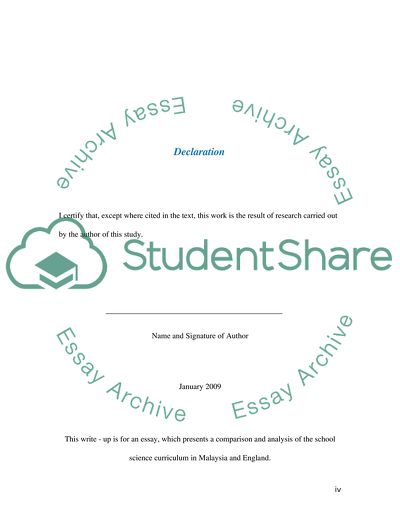Cite this document
(A Comprehensive and Critical Analysis of the Science Curriculum in Term Paper, n.d.)
A Comprehensive and Critical Analysis of the Science Curriculum in Term Paper. Retrieved from https://studentshare.org/education/1719430-a-comparison-and-critical-analysis-of-the-science-curriculum-in-comprehensive-secondary-schools-in-two-countries-malaysia-and-england
A Comprehensive and Critical Analysis of the Science Curriculum in Term Paper. Retrieved from https://studentshare.org/education/1719430-a-comparison-and-critical-analysis-of-the-science-curriculum-in-comprehensive-secondary-schools-in-two-countries-malaysia-and-england
(A Comprehensive and Critical Analysis of the Science Curriculum in Term Paper)
A Comprehensive and Critical Analysis of the Science Curriculum in Term Paper. https://studentshare.org/education/1719430-a-comparison-and-critical-analysis-of-the-science-curriculum-in-comprehensive-secondary-schools-in-two-countries-malaysia-and-england.
A Comprehensive and Critical Analysis of the Science Curriculum in Term Paper. https://studentshare.org/education/1719430-a-comparison-and-critical-analysis-of-the-science-curriculum-in-comprehensive-secondary-schools-in-two-countries-malaysia-and-england.
“A Comprehensive and Critical Analysis of the Science Curriculum in Term Paper”, n.d. https://studentshare.org/education/1719430-a-comparison-and-critical-analysis-of-the-science-curriculum-in-comprehensive-secondary-schools-in-two-countries-malaysia-and-england.


